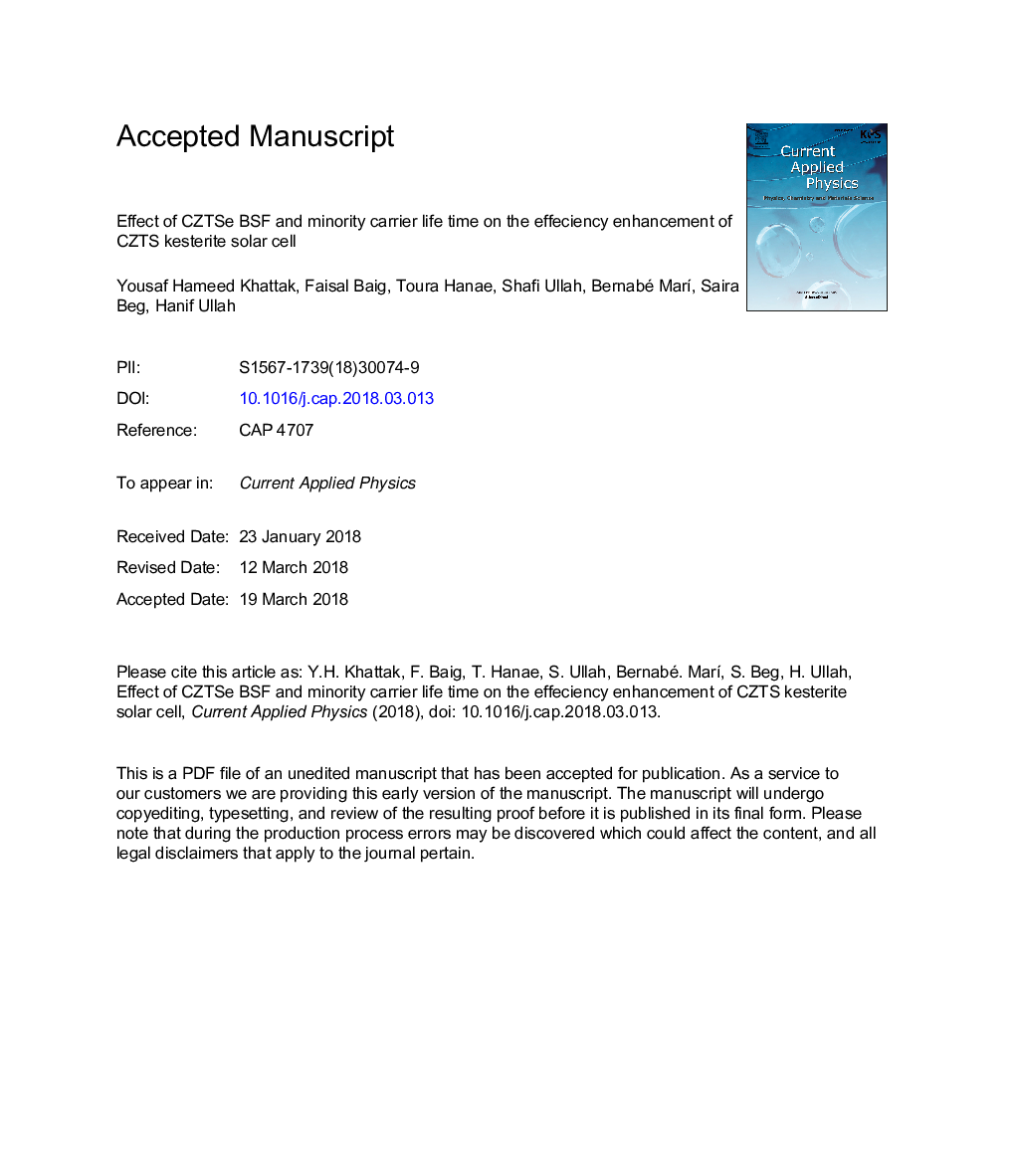| Article ID | Journal | Published Year | Pages | File Type |
|---|---|---|---|---|
| 8147720 | Current Applied Physics | 2018 | 21 Pages |
Abstract
Cu2ZnSnS4(CZTS) is non-toxic earth abundant material and a promising quaternary semiconductor compound of group I-II-IV-VI having kesterite symmetrical structure. Due to its optimum direct band gap, it has been considered suitable material for absorber layer for photovoltaic solar cell applications. This paper presents numerical modeling of experimentally designed CZTS solar cell by applying CZTSe as back surface field (BSF) layer. In this work we reproduced results for experimentally designed CZTS solar cell in SCAPS software. The simulated results are validated and compared with real experimental results. After optimization of cell parameters conversion efficiency of an optimized device is increased up to 6.42% (with CZTS thickness of 0.8â¯Î¼m). With further optimization and applying CZTSe BSF layer conversion efficiency increased up to 12.92%. Under 1.5 AM illumination condition from the proposed cell promising results had been achieved with short circuit current (Jsc) 27.41 mA/cm2, open circuit voltage (Voc) 744.4â¯mV, fill factor (FF) 63.35% and corresponding to a total area conversion efficiency of 12.92%.
Related Topics
Physical Sciences and Engineering
Physics and Astronomy
Condensed Matter Physics
Authors
Yousaf Hameed Khattak, Faisal Baig, Hanae Toura, Shafi Ullah, Bernabé MarÃ, Saira Beg, Hanif Ullah,
